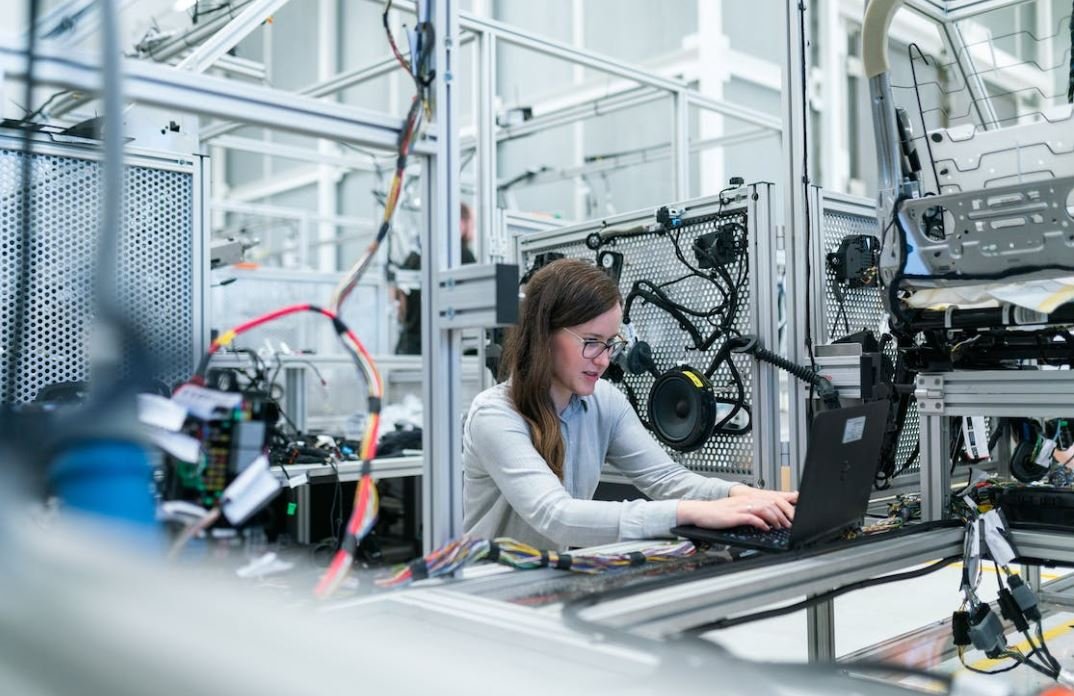AI Applications and Regulation: Mapping the Regulatory Strata
Artificial Intelligence (AI) is advancing rapidly, revolutionizing various industries and transforming the way we live and work. With AI becoming increasingly pervasive, there is a growing need for regulations to ensure its responsible and ethical use. In this article, we will explore the current and emerging applications of AI and examine the regulatory landscape surrounding these technologies.
Key Takeaways:
- AI is revolutionizing multiple industries and necessitates strong regulation to ensure responsible use.
- Regulatory frameworks are being developed to address ethical concerns and potential risks associated with AI.
- Several organizations and governments have established guidelines and principles to govern the development and deployment of AI technologies.
AI is being applied across various domains, from healthcare and finance to transportation and entertainment. In healthcare, AI is aiding doctors with diagnoses, drug discovery, and personalized medicine. *This technology has the potential to save lives and improve patient outcomes.* In finance, AI algorithms are used for credit scoring, fraud detection, and algorithmic trading, enabling faster and more accurate decision-making. *This leads to increased efficiency and reduced human error.* Transportation is another area benefitting from AI, with self-driving cars and drone deliveries becoming a reality. *These advancements have the potential to revolutionize the way we commute and transport goods.*
As AI becomes more prevalent, addressing the potential risks and ethical concerns is crucial. Governments and organizations are taking steps to regulate AI in order to protect individuals and society as a whole. The European Union’s General Data Protection Regulation (GDPR) includes provisions for automated decision-making, giving individuals the right to explanation and the ability to challenge decisions made by AI systems. *This promotes transparency and accountability.* In the United States, the Federal Trade Commission (FTC) has taken action against companies using deceptive AI algorithms, emphasizing the need for fair and unbiased AI systems. *This ensures consumer protection and fairness in the marketplace.*
Regulatory Frameworks and Principles
Various regulatory frameworks and principles have been established to guide the development and deployment of AI technologies. These initiatives aim to promote responsible and ethical AI practices. For example:
- The AI Ethics Guidelines for Trustworthy AI by the European Commission emphasize transparency, fairness, and accountability in AI systems.
- The Principles for AI developed by the Organization for Economic Cooperation and Development (OECD) focus on inclusive growth, sustainable development, and respect for human rights.
- The Montreal Declaration for Responsible AI highlights the importance of ethical considerations, human rights, and social justice in AI development and deployment.
Mapping the Regulatory Landscape
The regulatory landscape surrounding AI is complex and varies across different jurisdictions. Understanding the regulations in place is essential for organizations and developers working with AI. Below are three tables mapping the regulatory landscape of various countries:
| Country | Regulatory Body | Aimed Regulations |
|---|---|---|
| United States | Federal Trade Commission (FTC) | Protecting consumer rights, preventing deceptive practices, ensuring fairness in AI systems |
| European Union | European Commission | General Data Protection Regulation (GDPR), AI Ethics Guidelines for Trustworthy AI |
| China | State Administration for Market Regulation (SAMR) | Ensuring healthy market competition, protecting consumer interests, regulating data security |
Table 1: Regulatory bodies and focused regulations in selected countries.
Another dimension to consider is the industry-specific regulations. Certain sectors, such as healthcare and finance, have additional regulations specific to AI use. The table below provides an overview:
| Industry | Regulatory Requirements |
|---|---|
| Healthcare | HIPAA compliance, FDA regulations for AI-based medical devices |
| Finance | Compliance with financial regulations (e.g., SEC, FINRA), anti-money laundering (AML) requirements |
| Transportation | Regulations for autonomous vehicles, drone operation regulations (e.g., FAA regulations) |
Table 2: Industry-specific regulatory requirements for AI applications.
Lastly, it is essential to be aware of the specific AI-related regulations in different countries. The table below summarizes some of the notable regulations:
| Country | AI Related Regulations |
|---|---|
| United States | Federal AI Research and Development Strategic Plan Act |
| European Union | High-Level Expert Group on AI Ethics Guidelines, EU Proposal for a Regulation on a European Approach for Artificial Intelligence |
| Canada | Pan-Canadian Artificial Intelligence Strategy |
Table 3: AI-related regulations in selected countries.
AI applications are offering remarkable potential to benefit society, but they also present challenges that need to be addressed through effective regulation. The regulatory landscape surrounding AI is continually evolving, as governments and organizations respond to the opportunities and risks associated with this technology. By mapping the regulatory strata, we can navigate the complex landscape and ensure responsible, fair, and ethical AI development and deployment.

Common Misconceptions
1. AI will replace humans in all jobs
One common misconception about AI is that it will eventually replace humans in all jobs, leaving a devastating impact on employment rates. However, this belief overlooks the fact that AI is designed to assist and improve human work, rather than completely replacing it. While AI may automate certain repetitive tasks, it also creates new job opportunities in developing and maintaining AI systems.
- AI will primarily focus on augmenting human work rather than replacing it completely.
- AI technology requires human input and supervision to function effectively.
- AI automation will likely lead to the creation of new types of jobs that are complementary to AI systems.
2. AI will always act ethically
An often misunderstood notion is that AI systems will always act ethically and make morally sound decisions. However, AI is only as ethical as the data it is trained on and the algorithms behind it. There have been instances where AI systems have made biased or unethical decisions due to the underlying data or the lack of diverse representation during the training process.
- AI systems can perpetuate biases present in the data used for training.
- Ethical guidelines and regulations need to be in place to ensure responsible development and use of AI systems.
- Continual monitoring and transparency are crucial to detecting and addressing ethical concerns in AI applications.
3. AI regulation stifles innovation
Some believe that imposing regulations on AI will hinder innovation and slow down technological advancements. While it is essential to strike a balance between regulation and innovation, proper regulations can actually foster responsible AI development and adoption. Regulations can address ethical concerns, mitigate risks, and ensure fair and unbiased use of AI technology.
- AI regulations can provide a level playing field for businesses and prevent unfair practices.
- Proper regulation can enhance trust and acceptance of AI systems among the general public.
- Ethical AI guidelines can encourage responsible innovation and prevent the misuse of AI technology.
4. AI is a mysterious and uncontrollable force
There is a common misconception that AI is an unpredictable and uncontrollable force that we cannot fully understand or manage. While AI technology can be complex, it is not an enigmatic force. AI systems are developed and trained by humans, and their behavior can be analyzed, monitored, and governed.
- AI systems are designed and developed by humans, making them understandable and controllable to a certain extent.
- AI algorithms can be audited, and their outcomes can be evaluated to ensure transparency and accountability.
- Regulations and guidelines can help establish standards for AI development and use, providing a framework for control and accountability.
5. AI will solve all our problems
Some people have an exaggerated belief that AI will solve all our problems, from complex societal issues to personal challenges. While AI has the potential to contribute significantly to various domains, it is not a universal solution. AI is a tool that must be used judiciously and in conjunction with other approaches to address specific problems.
- AI systems are not a substitute for human intelligence, judgment, and empathy.
- AI technology has limitations and can produce erroneous results if not used appropriately.
- The collaborative integration of AI with human expertise can lead to optimal problem-solving outcomes.

Introduction:
The rapid advancements in Artificial Intelligence (AI) technology have sparked a need for robust regulations to ensure ethical practices and mitigate potential risks. This article explores various AI applications and their corresponding regulatory strata. Through a series of tables, we identify key aspects such as the industry sector, regulatory bodies, and specific regulations governing different AI applications.
1. AI in Healthcare:
AI applications in healthcare have immense potential to revolutionize patient care. From diagnostics to personalized treatment, the usage of AI is expanding. This table illustrates the regulatory bodies overseeing AI in healthcare, including the Food and Drug Administration (FDA) for medical devices and the Health Insurance Portability and Accountability Act (HIPAA) for data privacy.
2. Autonomous Vehicles:
As self-driving cars become a reality, ensuring their safe and efficient operation is of utmost importance. This table presents the different regulatory strata responsible for autonomous vehicles, including government agencies like the National Highway Traffic Safety Administration (NHTSA) and regional legislation such as the California Autonomous Vehicle Regulations.
3. AI in Finance:
AI has gained traction in the financial sector, enabling smarter investments, fraud detection, and risk assessment. This table showcases the regulatory strata governing AI in finance, encompassing bodies like the Securities and Exchange Commission (SEC) and financial market authorities.
4. Ethical AI:
The ethical use of AI is a prime concern. This table highlights the guidelines and regulations around ethical AI practices. It includes organizations like the European Commission’s Ethics Guidelines for Trustworthy AI and private initiatives like the Partnership on AI, fostering responsible AI development.
5. AI in Education:
AI is transforming the education sector through innovations like personalized learning and chatbot-supported interactions. This table explores the varied regulatory approaches to AI in education, including government legislation, guidelines from educational bodies, and data protection regulations.
6. AI in Agriculture:
Modernizing agriculture with AI technology offers advantages such as improved crop yield and sustainable farming practices. This table delves into the regulatory strata governing AI in agriculture, ranging from international organizations like the Food and Agriculture Organization (FAO) to national legislation specific to the agricultural sector.
7. Facial Recognition Technology:
Facial recognition technology raises concerns about privacy, surveillance, and potential biases. This table highlights the regulations on facial recognition technology, covering both government regulations like the European Union’s General Data Protection Regulation (GDPR) and self-regulation initiatives.
8. AI in the Energy Sector:
AI applications are increasingly employed in energy management systems, grid optimization, and renewable energy utilization. This table presents the regulatory strata pertaining to AI in the energy sector, including energy regulators, standards organizations, and policies on sustainable energy development.
9. AI in Telecommunications:
The telecom industry harnesses AI to enhance network performance, customer service, and cybersecurity. This table explores the regulatory aspects of AI in telecommunications, encompassing both national-level regulations and international agreements ensuring fair competition and data protection.
10. Data Privacy and Security:
Maintaining data privacy and security in the era of AI is a significant concern. This table elucidates the key data privacy regulations and frameworks, such as the EU’s General Data Protection Regulation (GDPR), California Consumer Privacy Act (CCPA), and other global initiatives.
Conclusion:
In the midst of rapid AI advancements, mapping the regulatory strata becomes crucial for ensuring the ethical and responsible development and deployment of AI applications across various sectors. The tables presented in this article provide valuable insights into the multifaceted landscape of AI regulation, contributing to a better understanding and preparation for the future of AI.
Frequently Asked Questions
What are AI applications?
AI applications refer to the various ways in which artificial intelligence technologies are utilized to perform specific tasks or solve specific problems. Examples of AI applications include speech recognition, image classification, and natural language processing.
What is the importance of regulating AI applications?
Regulating AI applications is crucial to ensure ethical and responsible use of AI technologies. It helps protect privacy, prevent bias and discrimination, promote transparency, and address any potential risks associated with the deployment of AI systems.
Who is responsible for regulating AI applications?
The responsibility for regulating AI applications typically falls on government bodies, regulatory agencies, and international organizations. These entities work towards establishing legal frameworks and guidelines to govern the development, deployment, and use of AI technologies.
What are some common regulations for AI applications?
Common regulations for AI applications may include data protection laws, algorithmic transparency requirements, guidelines for ethical use of AI, and standards for AI safety and security. Additionally, regulations may address issues such as privacy, fairness, and accountability in AI systems.
How does the regulation of AI applications impact businesses?
Regulation of AI applications can impact businesses in several ways. It can require businesses to comply with certain standards, ensure the responsible use of AI, and adapt their practices to meet legal requirements. Compliance with regulations can enhance trust, protect consumer interests, and foster a level playing field for all businesses.
Are there any international efforts to regulate AI applications?
Yes, there are international efforts to regulate AI applications. Organizations like the United Nations, the European Union, and the OECD are among those working towards establishing international guidelines and frameworks for the ethical and responsible use of AI technologies.
What challenges are faced in regulating AI applications?
Regulating AI applications presents various challenges. These challenges include the rapid pace of technological advancements, the complexity of AI systems, the potential for unintended consequences, and the need to balance innovation with ethical considerations. Additionally, regulatory frameworks must be adaptable to evolving AI capabilities.
What are the potential risks associated with unregulated AI applications?
Unregulated AI applications can pose risks such as privacy violations, algorithmic biases leading to discrimination, loss of human control over AI systems, and potential job displacement due to automation. Without regulation, there is an increased likelihood of misuse or abuse of AI technologies.
How can individuals and organizations stay informed about AI regulations?
Individuals and organizations can stay informed about AI regulations by following updates from government agencies and international organizations involved in AI regulation. Engaging with industry associations, attending relevant conferences, and keeping up with academic research on AI ethics can also provide valuable insights.
What is the future of AI regulation?
The future of AI regulation is expected to involve ongoing discussions, collaborations, and advancements in legal frameworks. As AI continues to advance, regulators will likely adapt and refine regulations to address new challenges while promoting the safe and beneficial use of AI technologies.





